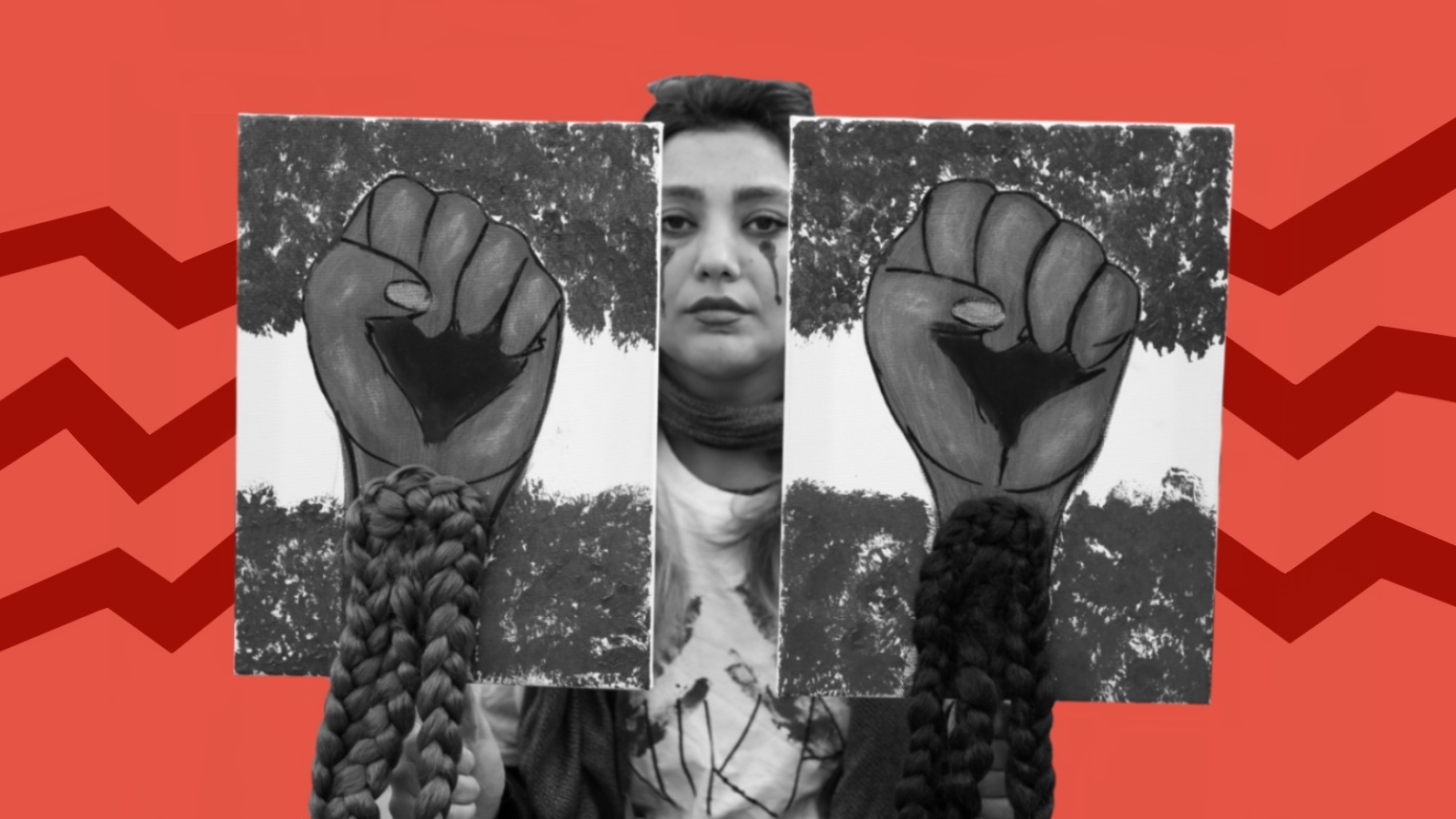From Marie Antoinette to Michelle Obama, one’s clothing often has the power to dictate their fate, says fashion historian and Barnard professor Caroline Weber.
Topic: Marie Antoinette
Caroline Weber: Recently I published this book called, "Queen of Fashion, What Marie Antoinette Wore to the Revolution" and it was basically a biography of Marie Antoinette and a history of 18th Century France seen through the lens of Marie Antoinette clothing choices. Revolutionary clothing studies doesn’t really exist in the universities in which I taught, but I became really interested in it when I was working on my first book which was on the “Reign of Terror.” I started noticing in a lot of the political speeches and political pamphlets and newspapers that were published in 1793, 1794, the Reign of Terror, which was the really radical phase of the French Revolution. But of course, there was all this discourse against luxury. Luxury was associated with the aristocratic class. It was associated especially with Marie Antoinette, this frivolous, beautifully bedecked figurehead at the apex of a society that the Revolutionaries were trying to destroy. I noticed that there was a lot of discussion in these political pamphlets, not just luxury as a political problem generally, but of Marie Antoinette’s own person style as a political problem specifically. And I started coming across very serious statesmen, kind of the equivalent of a Barack Obama today. But somebody like Robespierre, the head of this new state. Though I would say the similarities are pretty limited otherwise between Barack and Robespierre. But, somebody like Robespierre who had no time for frivolity would nevertheless be able to identify very specifically aspects of Marie Antoinette’s clothing choices. Kind of as if somebody like a Barack Obama were to condemn another political figure for wearing last season’s platform Prada shoes with the sculpted tulip heel. The language was that specific that Robespierre and the other political leaders were using to talk about the queen’s styles.
And all the terms were very obscure to me at the time because these are styles that don’t exist anymore. So people would complain viciously about Marie Antoinette’s “harpy hair dress,” or about her pouf a la contre-Revolution, the counter-revolutionary pouf, and what the hell were those things? So, I went back to the costume histories of that time. I went back to the fashion magazines of the time. In fact, the modern fashion magazine was pretty much born to keep track of Marie Antoinette’s ever-changing style to decode what these fashion choices were and what their political meanings might have been in the age of revolution. And what I found out was that Marie Antoinette had spent her entire life essentially stirring up controversy and making political statements through her clothing choices. When she first got to France, when she was only 15-years-old, and she was married off to the future king, the future Louis XVI, she was a Viennese princess, had never set foot on French soil, and she caused all kinds of commotion in the court of Versailles by refusing to wear a corset, she was young, she was skinny, she had a great figure. The court ball gown was this very structured thing with a tight waist and a huge inflated hoped skirt and low cut with lots of lace. She didn’t need a corset to fit into it. But what she quickly was told by alarmed people in very high positions, like the Austrian Ambassador to France, and like the King himself, the corset was a sign of prestige at the Court of Versailles. In fact, the more powerful you were within the court hierarchy, the bigger, and badder, and tighter your corset had to be. So, Marie Antoinette was not only expected to wear a corset, but she was expected to wear the most constrictive one of them all.
Only princesses of the blood and royals were allowed to wear it. It was so painful and restraining that people fainted in it all the time. Marie Antoinette’s best friend was a Princess of the Blood named, the Princess De Lambelle and she was famous for fainting every time someone told a funny story because she didn’t get enough oxygen to laugh. So Marie Antoinette was told at a certain moment within her first year at Versailles, you have to keep wearing the corset, this is a problem of which all of France is complaining. And so she learned very young, very soon in her time in France that all of France was looking at her clothing choices. And she went from that being something of which she became sort of a victim where she was constantly getting yelled at for these sort of breaches of sartorial etiquette to something that she used to try to express herself and make bids for authority and power at a time when she was, in fact, a very unpopular princess, and a very unpopular queen. And this long precedes the idea of, “Let them eat cake.” Marie Antoinette was unpopular before she ever showed up in France because she was Austrian. And the French did not want an Austrian woman on the throne. Austria had been an enemy of France for centuries before this arranged marriage that was designed to establish a new peace between the two countries. So, nobody wanted her at court even her own husband, who was supposed to get her pregnant so that they could have these children and shore up the Bourbon Dynasty. Her own husband hated Austrians and had been taught that Austrians were the source of all evil in the world, that they had poisoned both of his parents which wasn’t true. His parents had died of small pox, or tuberculosis, or something like that. But he had been taught that Austrians were murderers who killed his parents.
So, nobody wanted her around. Her husband didn’t sleep with her for the first seven years of their marriage. And she was in this position where because everybody wanted her gone, because she wasn’t even carrying a royal heir that could help her justify her presence at court, she decided to use clothing to establish a façade of authority where she didn’t have any. One of the most interesting things she did while she was still a teenager was she started wearing men’s riding clothes and riding astride, which was exceedingly uncommon at the Court of Versailles. Everything at the Court of Versailles was ritualized, everything was prescribed, and women rode sidesaddle in these very beautiful, flowing skirts, and very feminine outfits. Marie Antoinette dressed like a man to ride. If you look at a contemporary portrait from that era that she had painted of herself and she had copies sent to the courts all over Europe, where everybody was gossiping that she was going to get thrown out of Versailles and sent back to Vienna in disgrace, she looks exactly like Louis XIV posing astride his horse. So, she seemed to be reinventing herself as a powerful king. And this imagery was especially powerful and interesting because Marie Antoinette herself was related to Louis XIV, the greatest king that modern France had every known. So, she seemed to be posturing in a way to say, “Don’t mess with me I have every right to be in this august position.” And really, for the rest of her life she used clothing in that way to provoke the public, to assert power that she either had or wanted to make people believe that she had. And that what was really so interesting for me about her story was that her clothing was much more than just a hobby that a frivolous, not particular intelligent woman spent a log of time busying herself with because she didn’t have anything better to do. People often compare Marie Antoinette to Princess Diana for that reason, but what I tried to show in Queen of Fashion was that Marie Antoinette had very strong political reasons for and Marie Antoinette faced very strong political repercussions for the kinds of costuming selections that she made.
Question: What’s the relationship between fashion and fate today?
Caroline Weber: This idea of the relationship between our fashion and our fate is a really interesting one and I do think that it still has some applications today. During the last Presidential election, I had to write an article for the Financial Times about the clothing that was worn by each of the potential First Wives, Cindy McCain and Michelle Obama. And it was really interesting, if you thought about their clothing again as saying something more about them then just, oh, they happen to like blue, or they happen to like jewelry, you could really deduce some political message from what they were wearing. Cindy McCain famously wore and outfit that cost, I think, over $300,000 to one of the National Republican Convention appearances. She used only the favorite Presidential Couturier Oscar De La Renta. She wore very conservative, very sumptuous clothing. And the message seemed to be more of the same. I am a traditional first wife in the long lineage of, for instance, Barbara Bush and Nancy Reagan. I’m not afraid to spend a ton of money to look great and to look feminine, but in this very conservative, traditional way.
Michelle Obama famously went after all of these young designers, many of whom outside of people who shop at Barney’s had really ever heard of. We know now that she wound up choosing a 21-year-old designer, Jason Wu to design her Inaugural Ball gown and that was a very consistent choice for Michelle Obama with this idea of using young, undiscovered, small American businesses to send a different message which was, “We’re going to help small business.” We’re going to help the little guy.” She wore costume jewelry at almost every public appearance she made, and a lot of it was very beautiful, and some of it was surprisingly expensive when people looked into it. Some of these things by Erickson Beamon, and Tom Binz are very pricy if you try to go and buy them. But the message was different, it was: “I’m the kind of First Lady who is willing to wear paste. I don’t need to a have a gazillion diamond or pearl necklace to make an impression on the American people, or to transmit an image that is attractive, that’s palatable to the media.” It was a very different, very modern kind of self-fashioning that Michelle Obama did.
So, I do think that we are in an era where our clothing is still open to interpretation and we might even say, more than ever because we are in an era now where our public figures are photographed 24/7, they’re televised 24/7, they’re on the web 24/7, and because of this blogosphere, there is this whole culture where everybody is a critic. So, when I was researching my work on Michelle Obama’s fashion choices before the Presidential election, I was shocked at how many blogs had things to say about her clothing. And in that sense we could say that our clothing and our fate are more intricately intertwined than ever. I would say the flip side or the limitation to that argument is that we do live, in America and in Western Europe at least, we live in a democracy where there is fairly radical freedom of dress. And that simply wasn’t’ the case before the French Revolution. For instance, in 18th Century France, there were still very rigid guidelines for who, from what class was allowed to wear what. So, for instance if you were a commoner slaving away in a field somewhere, you would never be seen wearing a frock coat, for instance, or a powdered wig, or silk breeches, or hoped skirt, or a crown. Those were things that simply weren’t available to you economically or even really semi-legally. These things called sumptuary laws that restricted what people could wear and who was allowed to wear how much of what luxurious item, were very much in place in a lot of European countries and even when they weren’t in place.
Question: Who is the Marie Antoinette of our time?
Caroline Weber: People ask me a lot who the Marie Antoinette of our time is. And my answer sort of changes depending on my mood. The serious answer is that there can’t be a Marie Antoinette of our time for some of the reasons that I discussed, which is to say that the choices Marie Antoinette made about the way she presented herself physically and sartorially had massive political consequences. When Marie Antoinette introduced, for instance, the three-foot high teetering hair style known as the pouf that she loved and you could have little miniature farms installed in it, or a fully rigged battleship in it, or all kinds of things. She loved this style. It was heavily powdered. Flour was one of the ingredients of this powder. And so her head dresses were seen by a wide population, those who knew about them from fashion engravings and newspapers, they were seen by a wide swath of the population as literally taking flour and bread from starving people’s mouths.
At a certain moment in the 1770’s a riot called the Flour Wars erupted in France and I think 4,000 people stormed the gates of Versailles saying we know that the queen is hording all of the flour there. And it wasn’t true, but you had a kind of a massive politicization of dress in Marie Antoinette’s time. And Marie Antoinette played into it, she provoked it, she ultimately made matters worse for herself. I am convinced there had never really been an execution of an European Queen until Marie Antoinette came along. And I am convinced that she would have gotten a lot more lenient treatment if she hadn’t been so provocative and controversial and political with her clothing in ways that really offended her public. We don’t have anybody like that nowadays because, again, the political context is very different. But I think that we could look at a figure like for instance, Madonna. Somebody who succeeds in capturing the world’s attention time, and time again by refashioning her body, by changing her hair styles, by changing her appearance, by changing her identity through clothes. This is how she sells records and we all know that Madonna has relatively little talent. I think it was the shoemaker, Manolo Blanic, said that he was shocked that somebody with as little of the singing voice as she has good sound harsh and enormous star, and stay such an enormous star. And I think that's a testament to her genius as a chameleon. And this is been talked about by a million people before me, but I link her to Marie Antoinette because Marie Antoinette similarly was able to manipulate the public and stay in the public eye by changing her costume and this really flamboyant way, and doing it constantly.
So I think that Madonna is probably the best example. And then I think other examples are the wives of heads of state. So somebody like Carla Bruni or someone like Michelle Obama can send a certain kind of message about the sort of man she is married to, about the sort of country she comes from by what she chooses to wear in her public appearances. Carla Bruni has done this beautifully. I know a lot of French people who were very alarmed with the idea of this kind of risqué, rock star, Italian wild child becoming the first lady of France. But if you look at her public appearances she is always impeccable, she is always dressed in French designers in the most conservative possible French designs and very subtle, very somber colors, and she looks great. So she projects an image of France as elegance, chic, tastefulness, tasteful luxury, but nothing that can be offensive or alarming to the other members of the European Union.
Michelle Obama I think sometimes maybe goes too far with some of her choices of experimental fashions. Again I applaud her, relatively unknown designers like Rodarte, like Bacoon, like Jason Wu at some of those styles are sometimes a little bit surprising on her body type because she has such a large body type and a lot of goes clothing designs are really made for much thinner, more model-esque people. So I sometimes think that Michelle Obama strikes a false note with what she wears just because your choices are always appropriate to her body but I also think she does in a cave and find the warmth and accessibility and she tells us on late night TV how she likes to wear J. Crew, or she buys this hundred and $150 house from White House Black market and those messages are kind of nice messages to send on behalf of a Democratic presidential administration, egalitarian, approachable, accessible. And so Michelle, can convey those images thoughtfully through her clothes.
Recorded on October 13, 2009





